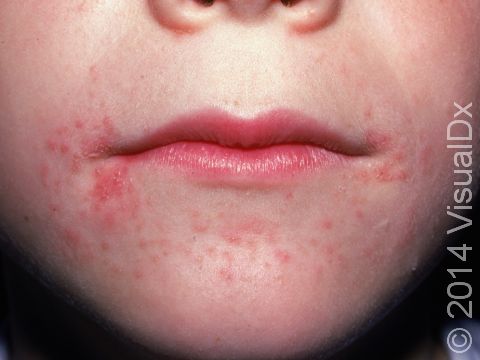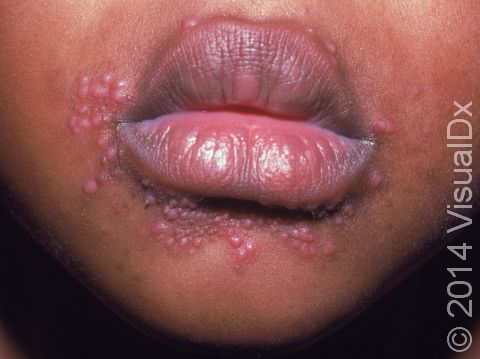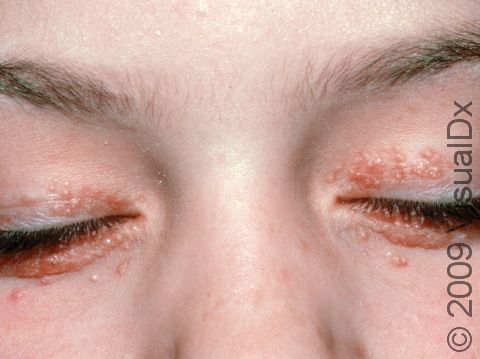Periorificial Dermatitis (Pediatric)
Periorificial dermatitis is an acne-like condition commonly seen around the mouth, and sometimes around the eyes and nose, in children.
- Children are otherwise well, but they develop small bumps around the mouth, nose, and eyes.
- The rash may be mildly itchy or burn, and it may come and go over time.
- Using a topical steroid may trigger periorificial dermatitis.
- Fluorinated dental care products and skin products containing petrolatum, paraffin, or isopropyl myristate may trigger the condition.
Who's At Risk?
Periorificial dermatitis commonly occurs in children and adults, and it is especially common in children with darker skin colors.
Signs & Symptoms
Tiny firm papules (solid bumps) and pustules (pus-filled bumps), with or without scaling skin, that appear around the mouth and sometimes around the nose and eyes. In darker skin colors, redness may be harder to see, or it may appear purple or brown. In lighter skin colors, the rash may appear pink or red.
Self-Care Guidelines
- If your child’s medical professional gives permission, stop using any medications (especially topical corticosteroids) that may be causing or worsening the problem.
- Stop using any dental products with fluoride and antitartar ingredients.
Treatments
The medical professional may prescribe:
- Oral tetracycline for children 9 years and older, gradually decreasing use as the condition improves.
- Metronidazole cream, a topical antibiotic, applied up to every 12 hours, gradually decreasing use as the condition improves.
- Topical antibiotics, such as erythromycin solution and topical pimecrolimus cream, may help mild outbreaks.
- Oral erythromycin for children younger than 9 years, gradually decreasing use as the condition improves.
Visit Urgency
See your child’s medical professional or a dermatologist for evaluation of any unidentified, long-lasting rash around your child’s mouth.
Trusted Links
References
Bolognia J, Schaffer JV, Cerroni L. Dermatology. 4th ed. Philadelphia, PA: Elsevier; 2018.
James WD, Elston D, Treat JR, Rosenbach MA. Andrew’s Diseases of the Skin. 13th ed. Philadelphia, PA: Elsevier; 2019.
Kang S, Amagai M, Bruckner AL, et al. Fitzpatrick’s Dermatology. 9th ed. New York, NY: McGraw-Hill Education; 2019.
Paller A, Mancini A. Paller and Mancini: Hurwitz Clinical Pediatric Dermatology. 6th ed. St. Louis, MO: Elsevier; 2022.
Last modified on July 25th, 2025 at 3:47 pm

Not sure what to look for?
Try our new Rash and Skin Condition Finder



